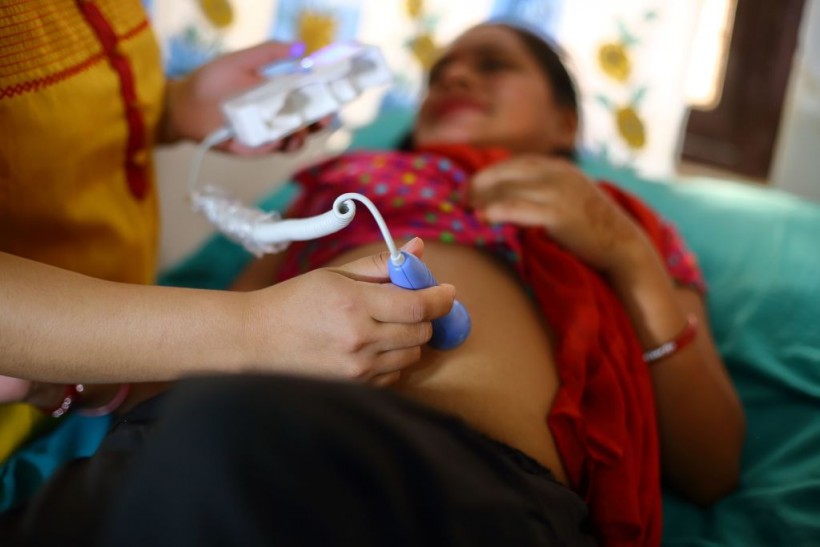Alabama's birth center crackdown is criticized by many Americans. In March, Alabama Department of Public Health officials said that they consider an unregulated facility to be a hospital without proper permissions to operate.
The birthing center clampdown only allows pregnant women who were in their trimesters to continue having babies in free-standing birth centers.
Why Alabama's Birthing Center Crackdown is Criticized

This photo taken on June 8, 2018, shows a Nepali health worker checking on a pregnant woman at a health center in the Ramechhap district, some 100 km east of Kathmandu.
According to NBC News' latest report, Alabama's birthing center crackdown lessens the options for mothers who are about to have their babies.
The clampdown affects numerous free-standing birth centers in the U.S. states. One of these is the Oasis Family Birthing Center, which is located in Birmingham.
The Alabama-based birthing center's Dr. Heather Skanes said that they had to turn away patients this spring ever since the crackdown began.
"Many of them felt that their voice in their choice had been taken from them," she said.
On Behalf of Skanes, the American Civil Liberties Union decided to sue the state's Public Health Department over the so-called "de facto ban" on free-standing birthing centers.
The new rules introduced by Alabama officials are criticized because they could drastically change how birth centers operate.
For example, midwives-although they are properly trained to assist out-of-hospital births-can no longer lead if they haven't met certain nursing qualifications.
Aside from this, the regulations will also require birthing centers to secure agreements with local hospitals to transfer patients.
Free-standing birthing establishments will also be needed to be only within a 30-minute drive of hospitals as well.
This is a major issue for Alabama since it is a state where many communities lack nearby childbirth options.
Read Also: Florida Universities Approve New Classic Learning Test for College Entrance Exam
Are Free-Standing Birthing Centers Risky?

A nurse cuts the umbilical cord after a cesarean section delivery at the Malalai Maternity Hospital on October 15, 2007, in Kabul, Afghanistan. According to a UNICEF survey, one in nine Afghan women die during or shortly after pregnancy in Afghanistan, one of the highest rates in the world.
In the United States, free-standing birthing centers help tens of thousands of babies to be born.
In 2016, over 20,000 babies were delivered by birth centers across the U.S.; this is an 83% increase over the recent decade.
Since birth centers lack the needed health equipment for complicated births, they ensure that they only accept low-risk pregnancies.
Studies showed that birth centers are just as safe as hospitals when it comes to handling low-risk births.
In England, a recent study revealed that over 65,000 births in birthing centers were less likely to have a C-section vacuum delivery (forceps), or episiotomy.
The research's findings also showed that they had no increased mortality risk or major complication compared to hospitals.
Related Article: California Court Halts School District Law Requiring Parental Notification If Student Changes Gender Identity








